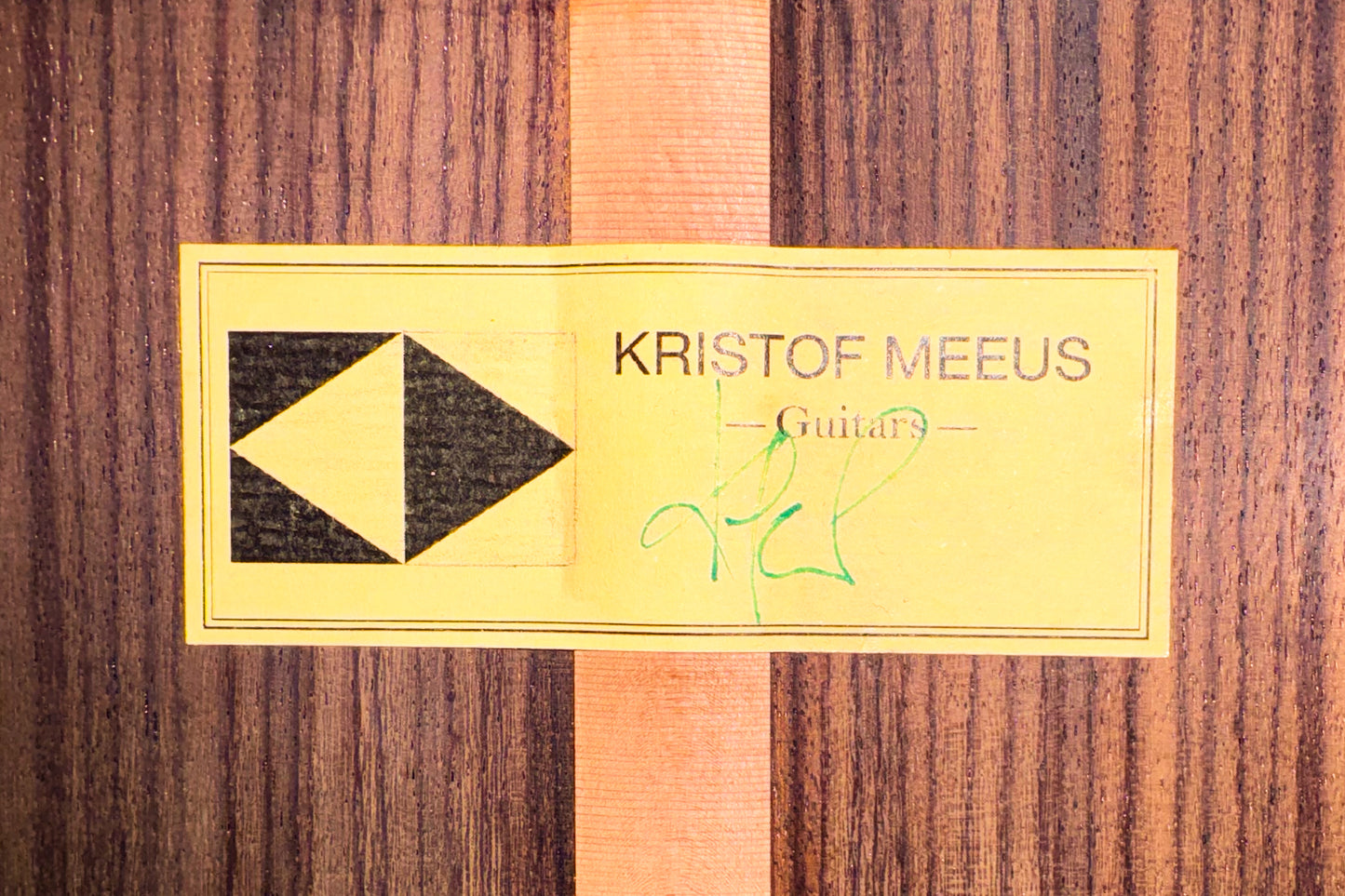Kristof Meeus - 2025 - Lattice - 64 cm
Kristof Meeus - 2025 - Lattice - 64 cm
Details
Details
Overview
Overview
Shipping important note
Shipping important note
Delivery times are typically reliable and most instruments arrive within the estimated timeframe.
Should any unexpected delay occur, our team will keep you informed and provide support at every step. For all shipping details and exceptions, please see our Shipping Policy.
Details about GPSR
Details about GPSR

























Video overview


More details about the guitar
About the luthier
After completing a Master in Sociology, Kristof Meeus joined the Centre for Musical Instrument Building in Puurs, Belgium, in 2006. In parallel, he worked in the workshop of Walter Verreydt, where he quickly developed solid skills in guitar making. Since 2012 he has worked as an independent luthier, and in 2016 he returned to the CMB as a teacher. Like many artists who sought knowledge through travel, he visited important collections and makers across Europe, including those of Gabriele Lodi, Lorenzo Frignani, Bruno Marlat, Antonio Marin, and Rafael Moreno. These encounters helped him build a broad view of both historical instruments and the modern classical guitar.About the guitar
This 2025 concert model combines a cedar soundboard with a lattice construction and Indian rosewood for the back and sides. The cedar top version is paired with spruce bracing, a choice that supports a fast, sensitive response while preserving warmth and depth. With an air resonance between E and F and a weight of 1410 grams, the instrument offers a lively attack, clear sustain, and excellent projection. The shorter 640 mm scale and a nut width of 52 mm provide a comfortable left hand feel and easy reach in extended positions. Fitted with Kris Barnett tuning machines and finished in French polish, the guitar presents refined handling and a traditional appearance. Sonically, it offers amazingly defined basses that work in perfect harmony with the sweet trebles that sing effortlessly, resulting in a balanced and rewarding concert voice.Regular care extends the life of the instrument
Even with careful use, a classical guitar may gradually change in appearance or respond to unstable storage conditions. Have a close look at your guitar regularly and be attentif to changes. If your instrument is suffering from its environement, it will let you know.
Protect Your Guitar: Handle with Care
Be mindful when touching your instrument with greasy or unwashed hands: any skin contact is a small attack on the varnish. Of course, a guitar is made to be played, but taking a few precautions helps preserve its beauty: wash your hands before playing, wear long sleeves, and avoid unnecessary direct skin contact with the body of the instrument.
Pro tip: Avoid playing with a button-up shirt, heavy jewelry, or a belt, as these can scratch the guitar. Also, make sure your guitar case is free of any objects that could damage the instrument during storage.
String care
A good habit to adopt is wiping down your strings briefly after each playing session. This small action significantly extends their lifespan and helps maintain a consistent, comfortable feel under your fingers.
Most importantly, clean strings are essential for keeping your instrument in tune. Corrosion, sweat, and dust can affect the uniformity of the strings and interfere with accurate tuning across the entire fingerboard.
Pro tip: If you're having trouble getting your guitar in tune, it might be time to change the strings. A useful test is to compare the pitch of the 12th fret harmonic with the fretted note at the 12th fret; if there's an unusually large gap between them, your strings may have lost their integrity and should be replaced.
Keep Your Shellac Finish Shining!
Got a guitar with a shellac (French polish) finish? Here's a simple trick: Take a clean microfiber cloth and gently breathe on the surface to create a light mist. Then, softly rub to remove fingerprints, sweat, and grease. That’s usually all it takes to keep it looking great, no products needed!
Pro tip: Every few years, treat your guitar to a check-up with a luthier to keep it in top shape.
Storing Your Guitar: Climate Matters
Your guitar can safely stay outside its case, as long as the surrounding environment maintains 42–55% humidity and a temperature between 18–25°C.
Keep in mind that humidity levels can still fluctuate inside the case, especially during seasonal changes.
- Too much humidity may cause overtightened strings and a dull tone.
- Too little humidity can lead to a bulging top, string buzz, or even cracks.
Avoid placing your guitar near radiators, air conditioners, or windows with direct sunlight.
Pro tip: Always close your guitar case while playing. This helps preserve a stable microclimate inside the case, so your instrument is protected the moment you put it back in.





















































